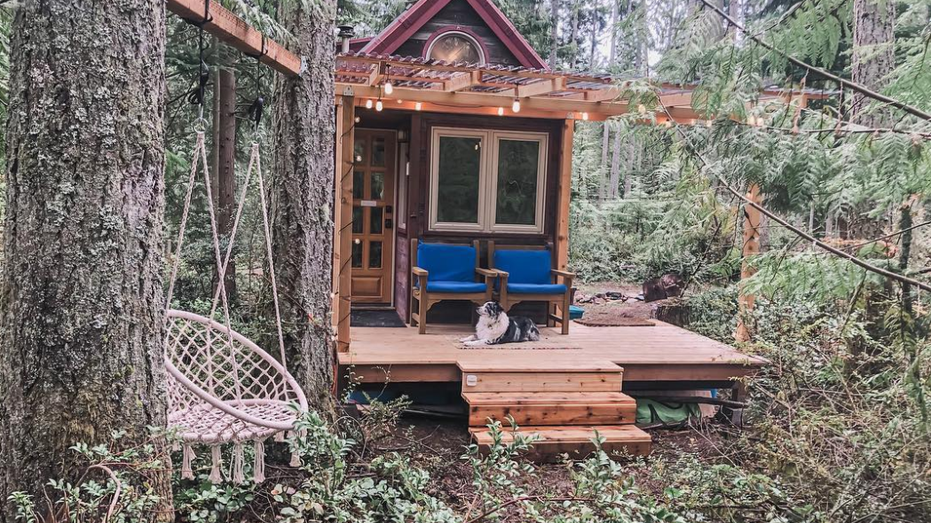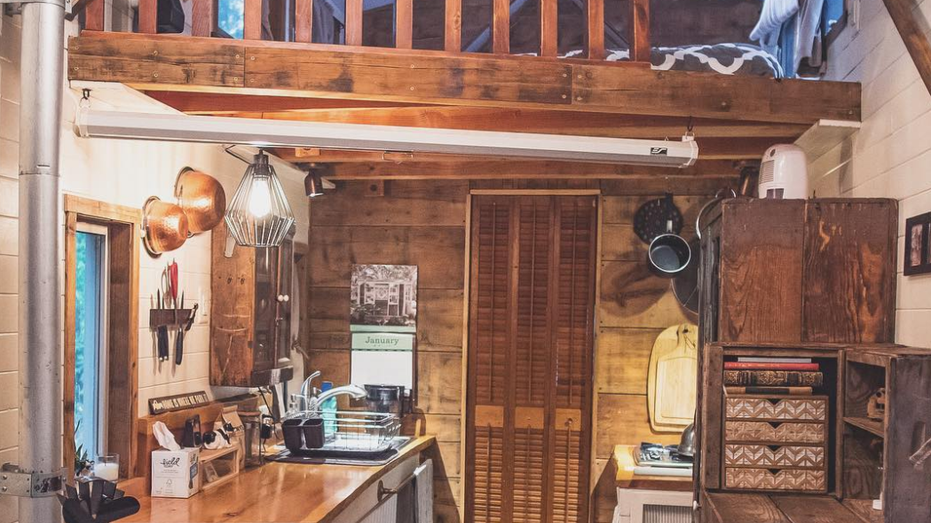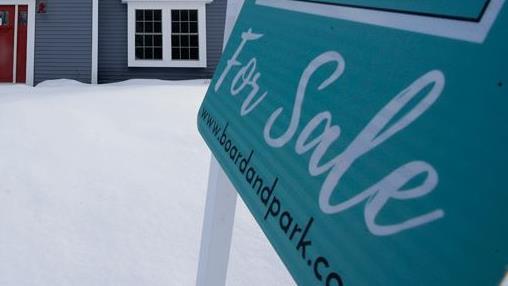Tiny house trend: Why so many people are looking to live small
Jenna Spesard used to step into her home and walk the entire length of the house in seconds. Just a few short years ago, she and her boyfriend were living full-time in a 165-square-foot micro home - tiny houses that are barely the size of a regular master bedroom. It’s part of a growing trend of people eschewing large mortgages and houses for affordable tiny little one-room dwellings.
Over half of Americans say they would consider living in a home that's less than 600 square feet, according to a survey by the National Association of Home Builders last year. Millennials expressed even more interest, with 63 percent revealing that they too would live in a tiny home.
The numbers show that many people are looking to live small. But why? What are the benefits and disadvantages of living in a tiny home?
“The obvious disadvantages are a lack of space,” Spesard told FOX Business.
“There is no privacy if you live with other people. It can be stressful on relationships because you can’t get away from each other. The benefits, at least relationship-wise, is that living in a tiny home will strengthen your relationship. You have to spend time together, there is no other room you can run off to if you need space. If there are any issues you have to work it out, you will be forced to do so, because you can’t live in a 165-square-feet home together if you don’t get along.”
Spesard, who runs a YouTube channel documenting her time living in a tiny home, only paid $30,000 in materials to have the dwelling built. She and some friends constructed it, so she paid no labor costs.
“That’s a cheap house no matter where you live in the country. It took the course of a year to finish building it, and in the meantime I sold everything I had, including my car, furniture, and with the money I made selling those items, I was able to pay for [the tiny home] out of pocket without taking out a loan of any kind.”
“I was living in Las Vegas [before moving into the tiny home], living in an apartment with two other girls, paying $1,000-per-month rent, so about $12,000 a year alone for rent and living expenses,” she said.
“Within two and a half years or so of buying and living in the tiny home, I would have spent the same amount on rent that I would be living in an apartment, and at the end of it, I had a house of my own.”

A view from the porch of a tiny home (Courtesy Jenna Spesard Instagram)
The statistics show that owners of tiny homes carry far less debt compared to average the American. According to tiny house statistics provided by the Tiny House Society, 89 percent of tiny house owners have less credit card debt than the average American, 60 percent of tiny house owners have no credit card debt at all, and 55 percent of tiny house owners have more savings in the bank than the average homeowner.

Meanwhile, 68 percent of tiny house owners don't have any mortgage, and homes beneath the 500-square-feet range are appreciating twice as fast as the overall market, according to Realtor.com (19 percent vs. 9 percent).
Tiny Heirloom, a tiny home building company founded in 2014, has seen first-hand how the industry has exploded in popularity amongst a variety of demographics over their five years in business.

The interior of Spesard's tiny home (Courtesy Jenna Spesard Instagram)
"People's interest in tiny homes has definitely grown since the beginning of the Tiny House Movement," a spokesperson for Tiny Heirloom told FOX Business.
GET FOX BUSINESS ON THE GO BY CLICKING HERE
"The number of homes sold per year has gone up tremendously, averaging about 30K nationwide."
"The people who generally buy Tiny Homes are a mix, coming from all walks of life. Whether it’s a college student, graduate, family of four, or retiree; whether their reason is to achieve homeownership without the overwhelming, hefty price tag of a traditional mortgage, or maybe to just live a more free lifestyle without any roots, to be able to travel and even take their home with them."
Spesard still has her micro home, however, the couple officially moved out a few years back and now use it part-time for vacationing as well as renting it out on Airbnb.
“I basically had no expenses while living there,” she added. “I was able to pay off student loans and bought a new car outright.”
“By the end of that second year [of living in the micro home], I was completely debt-free. After that, I moved it to an island off of the coast of Seattle, and that’s where I started renting it out on Airbnb. Now, it’s making money for me. It’s a life tool. It works for you, you don’t work for the house.”
Despite the relative simplicity and inexpensive nature of living in a tiny home, there are several daunting challenges that many tiny home-buyers do not necessarily foresee upon purchasing one.
Where exactly can you put it?
Zoning laws can wildly differ from location to location and are often extremely restrictive when it comes to tiny homes. The majority of zoning laws have a minimum lot size requirement, with some communities outright prohibiting adding more structures on a property.

A section of the Oak Forest trailer park is also home to the Original Tiny Home Hotel in Austin, Texas. People can rent a ting home with room for four people and a full kitchen. open since March 2017, it gives people a chance to check-out living in l (iStock)
And if the home is on wheels and considered mobile, securing traditional financing can be difficult for tiny home buyers.
Upstate New York-based Hudson River Tiny Homes states on its website that “one of the most difficult problems facing the tiny house movement is where to put it if you want to live in it full time. The only zoning provision that is certain is in either an RV park or a tiny house community.”
The only place in the Upstate New York area that allows for tiny homes is at Stones RV Park in Valatie, where monthly rates this year are $430, which includes water and sewage while electricity is based on usage.
The tiny home building company writes on its website that it is currently in the process of conducting a feasibility study for a second tiny home-friendly zoning area in the town of Hudson.
The uncertainty over where one will park their tiny home and the relatively slow progress of municipal zoning laws to accommodate them persists amongst owners of tiny homes. But for those who do find a lot, the experience of living in a house the size of a single bedroom is rewarding, according to Spesard.
“Think about how you’re gonna use your house, what are your needs? Where are you gonna park it? Be open to how its use could change in the future as your life changes.”
“Living in a tiny home can show you what is important in your life, it can help you if and when you move into a larger home as well because after the experience of living in a tiny home, you know the things you need and what you don’t need. You can live simply and take those lessons learned from living in a tiny home and apply it to living in a regular-sized house.”
CLICK HERE TO READ MORE ON FOX BUSINESS




















